In this case I think filtering it out passively is going to be a bit of a challenge since it's quite broadband.If you worry about 1.5% K3 of the Sig180 why don't you just filter it out? (passively)
You can even switch it on/off during listening anytime making a cable long enough to your listening position!
Now the BIG AUDIO CONTEST : WHO is able to detect a difference and HOW does it sound?
And WHICH music for testing?
For those who have acute distortion phobia and need a quick solution here's the cure without costing a fortune , Klippel approved : https://www.kartesian-acoustic.com/copie-de-wom165-vhe
(link is correct but the driver name is
Wom165_vMS)
https://en.toutlehautparleur.com/speaker-kartesian-wom165-vms-8-ohm-164-5-mm.html
Btw - the 8836(?) from Usher Audio was also very good regarding distortion , stiff Kevlar cone and T-shaped pole piece with thick copper ring , flat response out to 4kHz (see test in Hobby Hifi magazine with B&K equipment) ... reflex alignment needs 30Ltr tuned to 30Hz .
Audio Heaven is not so far away as you might think 🙂
Will someone please post these images for the 8" and 10" versions (I'm assuming 4 or 8 ohm wouldn't differ much?), or at least tell me how to open FRD/ZMA files on an Android device? Thank you.View attachment 1176782
There's a distortion graph in the FRD/ZMA files they included. That bump at 850 isn't inspiring, and there's no reference volume.
FRD is not a picture file. It is a response data file you can view in a crossover simulator or a text editor.
The distortion plots I had found in the typical FRD/ZMA are in fact pictures of plots, not text data to be displayed in plotting software.
Hobby Hifi tested the entire SIG series in their latest magazine.
Can't say I am impressed, unfortunately I have to add.
It seems there is almost something off with the design of the demodulation rings.
Even for alu rings, they don't seem to add much to the table.
The RS225 is also better compared to the SIG225
The SIG225 is not really usable anymore above 400Hz, while the RS225 is very nice even up till 2kHz.
Can't say I am impressed, unfortunately I have to add.
It seems there is almost something off with the design of the demodulation rings.
Even for alu rings, they don't seem to add much to the table.
The RS225 is also better compared to the SIG225
The SIG225 is not really usable anymore above 400Hz, while the RS225 is very nice even up till 2kHz.
^^^
I agree.
Limited bandwidth
Published online- here they are:
Signature 180
Signature 225
Signature 270
But it looks nice. I wonder whether people will be thrilled by the special effects of H3 not being lower than H2, but higher than H2, and only at certain frequencies.
Does anyone know the test setup/procedure of Hobby Hi-Fi?
I agree.
Limited bandwidth
Published online- here they are:
Signature 180
Signature 225
Signature 270
But it looks nice. I wonder whether people will be thrilled by the special effects of H3 not being lower than H2, but higher than H2, and only at certain frequencies.
Does anyone know the test setup/procedure of Hobby Hi-Fi?
Last edited:
Distortion measurements from hifitest/klang und ton are pretty poor.
Below 200Hz it's totally useless.
Often they correlate poorly with other sources as well.
Below 200Hz it's totally useless.
Often they correlate poorly with other sources as well.
It seems they cannot ever read the spec sheet correctly over at HiFiTest.de. They list Xmax for the SIG270 as 3.25mm, which is half the Dayton value and I very much doubt they actually measured it. Maybe they assumed the value from the MFG was pk-pk?
Having cast a quick eye at the Sig180 measurements, the trend is roughly what I'd expect, with HD3 at 1/3 of the main cone resonance -that's just the usual distortion amplification you get with a rigid cone driver, so unless it's used for LF only, you'd need a high impedance parallel LC in series with it to stamp that out. Which also limits the usable BW of course; I suspect about 1.2KHz or thereabouts would be about the highest I'd be wanting to use it. On the whole, I suspect I'd prefer to use the RS units.But it looks nice. I wonder whether people will be thrilled by the special effects of H3 not being lower than H2, but higher than H2, and only at certain frequencies.
Note that the online tests you linked to are by "hifi-test", not "hobby hifi". The parameters and test results of both magazines differ slightly.Published online- here they are:
🙂 no problem at all ... it's confusing with all those similar names.Apologies.
Hifi test and Klang&Ton seem to be published by the same house, so these are probably the same tests.
Klang&Ton is mostly presenting Loudspeaker kits and in my personal opinion it's a bit less in-depth (more driven by advertising) than Hobby Hifi - but I might be wrong.
The H3 is more than -40dB down, why is everyone calling this a problem? Proper use will likely suppress that point alittle more and spec shows.
I think it is capable to 3k, but I will be finding out soon enough. Of the times I've heard it now, I feel that the extension wasn't what I would have wanted. I feel like over compensating the BSC would likely cure the issue. Usually, the use in a 2way has left me wanting, where the breakup was not suppressed, or some other problem. I will be investigating for sure....
I think it is capable to 3k, but I will be finding out soon enough. Of the times I've heard it now, I feel that the extension wasn't what I would have wanted. I feel like over compensating the BSC would likely cure the issue. Usually, the use in a 2way has left me wanting, where the breakup was not suppressed, or some other problem. I will be investigating for sure....
I was hoping Dayton would aim a little higher.
This is an in-box measurement of a 5.25" mid-woofer whose SPL is 86dB for average of 300Hz to 3KHz.

The Edifier S1000MKII is one the recommended picks by the listening team over at the Wirecutter (as of August 2024) for bookshelf speakers, when they conducted blinded listening tests.
As measured by our old friend Brent Butterworth:

Reference:
https://docs.google.com/spreadsheet...ta39olZCpxzbJ0tp2YoeNw/edit?pli=1&gid=0#gid=0
My own sample:

Obligatory CTA-2034A:

Horizontal polar map:

And it comes with solid cabinets with >3/4” MDF, baffles with some diffraction control, internal chamfers, a poly coated alu cone midwoofer, a 1” alu dome tweeter, 2 amplifiers per speaker, DSP for equalization, tone controls and crossover functions, a remote control, 2 analog inputs, 2 digital inputs and Bluetooth for connection to mobile devices…
That damn double edge sword of globalisation.
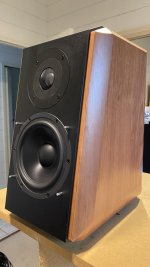
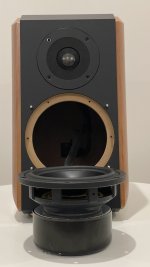
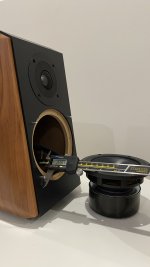

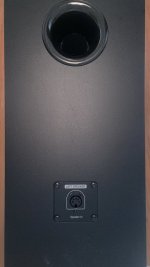
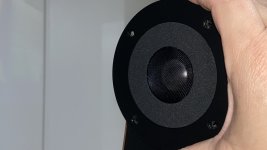
Sometimes you want to DIY, other times you just want to listen to music…
at MSRP $400 a pair…
This is an in-box measurement of a 5.25" mid-woofer whose SPL is 86dB for average of 300Hz to 3KHz.
The Edifier S1000MKII is one the recommended picks by the listening team over at the Wirecutter (as of August 2024) for bookshelf speakers, when they conducted blinded listening tests.
As measured by our old friend Brent Butterworth:
Reference:
https://docs.google.com/spreadsheet...ta39olZCpxzbJ0tp2YoeNw/edit?pli=1&gid=0#gid=0
My own sample:
Obligatory CTA-2034A:
Horizontal polar map:
And it comes with solid cabinets with >3/4” MDF, baffles with some diffraction control, internal chamfers, a poly coated alu cone midwoofer, a 1” alu dome tweeter, 2 amplifiers per speaker, DSP for equalization, tone controls and crossover functions, a remote control, 2 analog inputs, 2 digital inputs and Bluetooth for connection to mobile devices…
That damn double edge sword of globalisation.






Sometimes you want to DIY, other times you just want to listen to music…
at MSRP $400 a pair…
Last edited:
I always feel the urge to push friends down the rabbit hole when they ask me what audio gear to buy. But with performance per dollar in mind, I usually direct them to powered speakers in the endat MSRP $400 a pair…
...even though they're so boring!
Might be audible for some, in general with the 180 there's just something wrong about how they render the ~600-700hz range. Could be the distortion, could be something else but I didn't care for the driver either way.The H3 is more than -40dB down, why is everyone calling this a problem?
As this thread has gone quiet I don’t feel too bad about going a little OT. Has anyone compared the RS225 to the Satori M19P? Worth saying that the latter is twice the price of the Dayton in the UK. Intended use would be passband of 75hz-c.1500hz.
Depends. I think the Dayton are good at bass, but I found the RS125 to be a little "damped" in the upper midrange - I crossed it at 2kHz - compared to the MW13TX. This could be because of many things, like better motor and cone. But the little Dayton really did play good solid bass... the Satori did not. So if you cross it at 1500 to a big waveguide and get a nice power response, then it might be really good overall. You have to consider the entire design before rule out, any driver 🙂As this thread has gone quiet I don’t feel too bad about going a little OT. Has anyone compared the RS225 to the Satori M19P? Worth saying that the latter is twice the price of the Dayton in the UK. Intended use would be passband of 75hz-c.1500hz.
I cross at 400Hz because i find most drivers do not play good bass, while they play good midrange - at the same time.
At present, I only found two options, that played both good bass and mid-bass - at the same time. RS225 for best budget and WO24P to have the best - IMO.
For midrange duty... I think both could go to almost 1500Hz... but I definitely prefer smaller and more dedicated midranges above around 500Hz.
Also - the higher you go... the more important timing, filtering and baffle becomes.
- Home
- Loudspeakers
- Multi-Way
- Dayton Audio Sig series